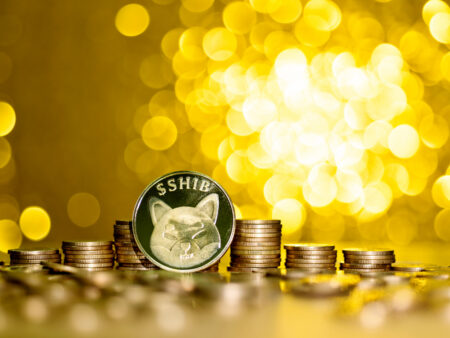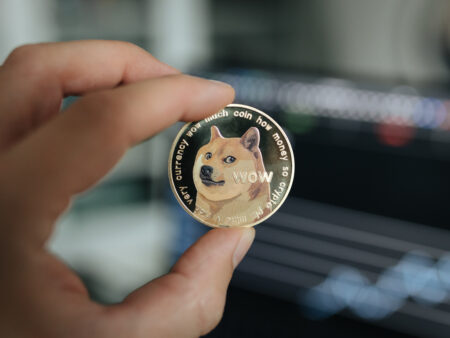This month, Shiba Inu, a once buzzworthy cryptocurrency, has seen its price plummet by a startling 30%, sending shockwaves throughout the crypto community. This notable dip has put Shiba Inu’s performance in stark contrast with other digital currencies like Bitcoin and Dogecoin, which haven’t experienced declines as severe.
Shiba Inu, originally intended as a light-hearted parody of Dogecoin, has garnered both attention and skepticism due to its inability to be mined. Unlike Bitcoin, whose supply is controlled by the computational process of mining, Shiba Inu’s creators pre-mined nearly a quadrillion tokens on the Ethereum blockchain. The token’s supply is further complicated by the fact that over 40% has already been taken out of circulation, or “burned,” in an attempt to create scarcity and boost value.
Adding to its complexities, Shiba Inu has been actively trying to establish a more substantial foothold in the world of decentralized finance (DeFi) by launching Shibarium, a Layer-2 blockchain. The goal is to attract more developers with the promise of smart contract capabilities. Part of this expansion strategy involves setting up a burn portal on Shibarium, which is expected to help stabilize the currency by further decreasing the supply.
However, the road to stability for Shiba Inu has been riddled with challenges. A small group of anonymous investors, referred to as “whales,” hold a disproportionately large amount of Shiba Inu tokens, making its price susceptible to their trading strategies. Moreover, despite the development of Shibarium, developers may find limited utility compared to more expansive blockchain ecosystems. Additionally, Shiba Inu’s acceptance as a method of mainstream payment remains minimal.
Shiba Inu has certainly demonstrated rapid market cap growth and remarkable agility in price movement, but these attributes come with their own set of risks. Volatility is high, and the market sentiment can shift dramatically; recently, the momentum has tipped in favor of short-sellers, leading to a significant discount on Shiba Inu’s spot price.
Despite these challenges, it’s worth noting that Shiba Inu has managed to surge about 65% year-to-date and has more than doubled over the past twelve months. Some market analysts have gone as far as predicting a 270% increase in Shiba Inu’s price this year, though it’s important to remember that such estimates make it a speculative investment not without risk.
As the cryptocurrency market continues to evolve, investors are left watching closely to see if Shiba Inu can leverage its ecosystem expansion and capitalize on its Layer-2 solutions to regain lost ground. Only time will tell if Shiba Inu can transform these shifts into a sustainable upward trend or if it will continue to ride the waves of an unpredictable market.










